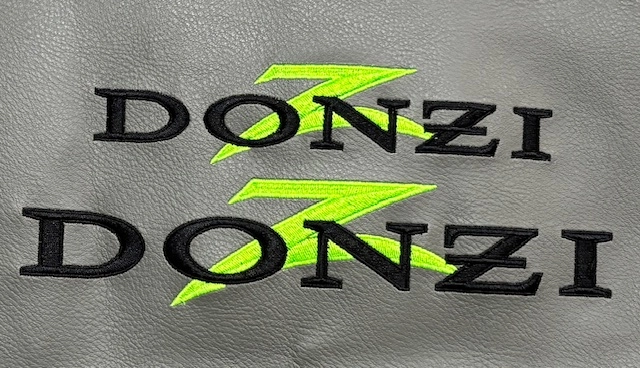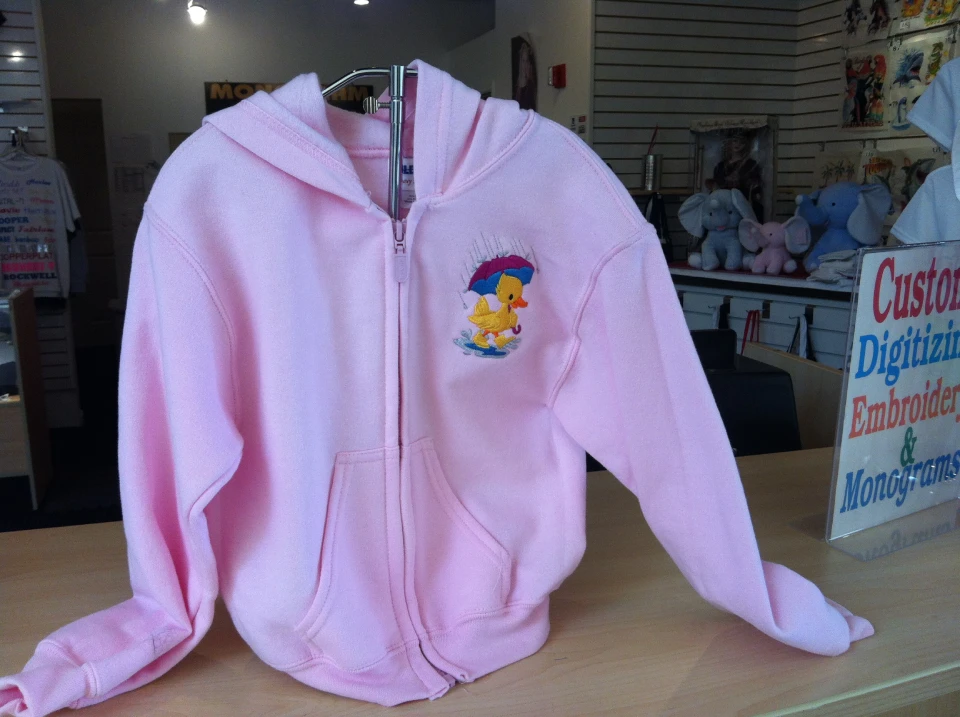Heat Transfer on T-Shirts and Aprons - Personalized Layouts and Logo Designs
Heat Transfer on T-Shirts and Aprons - Personalized Layouts and Logo Designs
Blog Article
The Art of Personalized Needlework: Opening the Keys to Creating Unique and Memorable Designs
The secrets to producing custom needlework layouts that captivate the eye and leave a long lasting impact lie in a delicate balance of technique, creativity, and interest to detail. As we dive right into the world of personalized embroidery, we uncover the nuanced interaction between thread option, sew intricacy, and design customization that raises a plain garment to a work of art.
Choosing the Right Needlework Threads
When picking needlework threads, what crucial variables should you consider to make sure the very best outcomes for your custom styles? The option of needlework string is crucial in identifying the final result of your stitched layout. Among the key considerations is the material of the thread. Different materials such as cotton, polyester, rayon, and silk provide varying levels of shine, toughness, and appearance. It is necessary to choose a thread material that complements the fabric you are embroidering on and aligns with the desired look of the design.
In addition, the weight or density of the thread plays a considerable role in the look of the needlework. Thicker strings can add dimension and appearance to your style, while finer threads are perfect for intricate information and tiny text. Additionally, considering the shade fastness and washability of the thread is essential to ensure that your personalized styles maintain their top quality and vibrancy gradually. By very carefully reviewing these variables and picking high-quality strings that fulfill your details needs, you can improve the visual allure and durability of your stitched developments.
Checking Out Different Stitch Strategies
To look into the realm of 'Checking out Various Stitch Techniques', one have to understand the details and nuances that each stitching approach brings to the art of embroidery. Various stitch techniques not only include visual rate of interest yet also add to the total texture and dimension of the style. One preferred stitch technique is the satin stitch, which includes very closely packed parallel stitches to produce a smooth and glossy surface area, ideal for completing forms and developing bold describes.
On the various other hand, the backstitch is a functional technique typically made use of for describing and adding great details. It includes sewing backward to produce a strong line of embroidery. In addition, the French knot stitch adds a responsive component to layouts, perfect for creating textured accents like flower centers or decorative touches.
Exploring various stitch strategies allows embroiderers to have fun with light, darkness, and depth within their designs, elevating the aesthetic allure and artistic top quality of their needlework tasks. By understanding numerous sewing techniques, one can open endless possibilities for producing special and remarkable custom needlework items.
Incorporating Personalized Style Aspects
Having actually checked out the intricacies of different stitch strategies such as the satin stitch, backstitch, and French knot, the emphasis currently moves in the direction of integrating individualized design components in customized needlework jobs. Personalized design components play an important role in making embroidery projects truly one-of-a-kind and remarkable.
Another method to incorporate individualized design components is by including symbols or concepts that hold unique significance to the recipient or reflect their passions and character. As an example, incorporating a preferred blossom, animal, or hobby-related sign can make the needlework design much more purposeful and personalized. In addition, choosing colors that reverberate with the recipient or straighten with the desired theme can even more improve the personalization of the needlework job.
Understanding the Art of Shade Coordination

One secret facet of color sychronisation is recognizing color theory. This consists of knowing exactly how various shades communicate with each other, the feelings they convey, and just how they can be integrated to create aesthetically attractive layouts. By using color theory principles, embroiderers can produce unified color palettes that improve the overall appearance of the best site design.
Furthermore, taking notice of contrast is essential in shade coordination. Using contrasting colors can assist certain aspects of the style pop, boost clarity, and produce an aesthetically dynamic needlework piece. By understanding the art of color control, embroiderers can elevate their designs and create memorable pieces that resonate with clients and customers alike.
Enhancing Structure With Advanced Needlework Stitches

French knots, for example, are ideal for adding small, increased dots to your style, navigate here simulating the look of beads or producing a textured surface. Bullion knots, on the other hand, can be used to create twisted, ropelike elements that add an extravagant feeling to the needlework. Seed stitching includes tiny, scattered stitches that can complete areas with a speckled texture, while turkey job develops reference cosy, dimensional accents similar to animal fur or foliage. Explore these innovative needlework stitches enables you to push the boundaries of standard needlework and create truly unique and aesthetically enticing structures in your designs.
Final Thought
In conclusion, the art of personalized needlework involves a mix of choosing the ideal strings, checking out various stitch methods, incorporating personalized layout aspects, understanding color control, and improving texture with advanced stitches. By understanding and implementing these crucial elements, embroiderers can create one-of-a-kind and remarkable layouts that display their imagination and skill. Needlework enthusiasts can open the keys to creating lovely and custom pieces that stand apart and leave a lasting impression.
Report this page